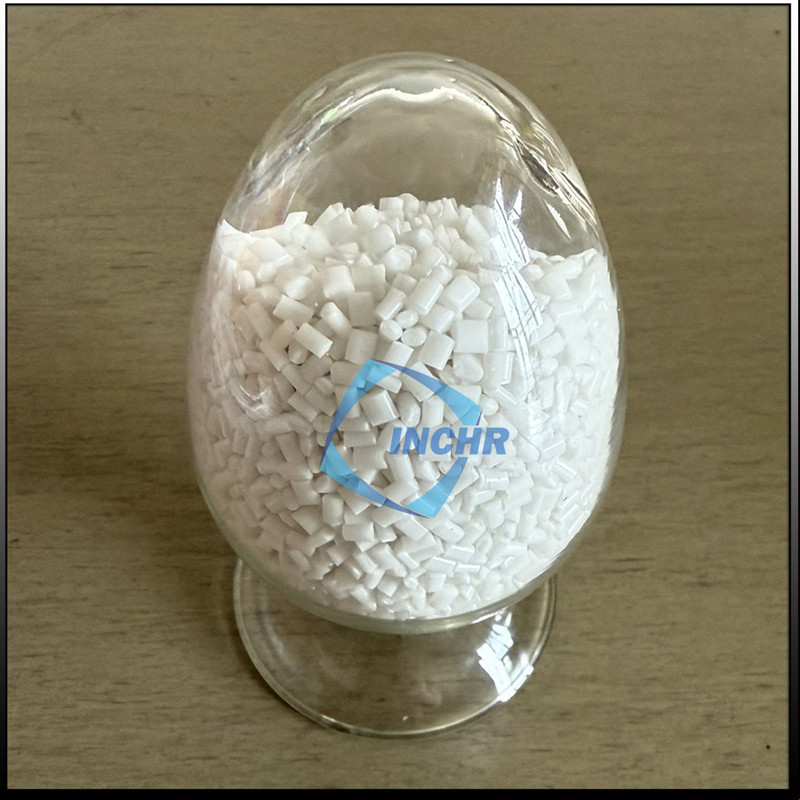Why Anti Block Masterbatch is Redefining Plastic Film Quality
In the fast-evolving world of polymer manufacturing, anti block masterbatch has emerged as a non-negotiable solution for producing high-performance plastic films. From ultra-thin food packaging to durable agricultural covers, this additive ensures films remain defect-free, functional, and sustainable. Here’s why industry leaders can’t afford to overlook its transformative potential.

The Mechanics of Anti Block Technology: Precision in Action
Anti block masterbatch incorporates microscopic particles (typically silica, talc, or advanced synthetics) into polymer resins. These particles create a nano-scale textured surface, achieving three critical outcomes:
Friction Control: Reduces the coefficient of friction (COF) for smooth processing.
Optical Integrity: Maintains >90% light transmission in packaging films.
Adhesion Prevention: Eliminates layer sticking during storage or transport.
Technical Specifications:
Particle Size: 1–10 µm (smaller for ultra-thin films, larger for industrial sheeting).
Loading Rate: 1–5% by weight, depending on resin type (LDPE, PP, PLA).
Thermal Stability: Withstands extrusion temperatures up to 260°C.
5 Cutting-Edge Applications Driving Demand
1. Smart and Active Packaging
Enables QR code/NFC-integrated films by preventing surface defects.
Case Study: A U.S. brand reduced packaging waste by 30% using nano-silica anti-block agents.
2. High-Efficiency Agricultural Films
Prevents greenhouse film blocking while optimizing light diffusion for crop growth.
UV-resistant grades extend film lifespan by 2–3 seasons.
3. Medical-Grade Barrier Films
Ensures sterility in IV fluid bags and pharmaceutical blister packs.
Complies with ISO 10993-5 and USP Class VI standards.
4. Recyclable and Biodegradable Films
Supports PCR (post-consumer recycled) resins with low-migration formulas.
Compatible with compostable materials like PBAT and PLA.
5. Industrial Stretch Films
Enhances pallet-wrapping efficiency with COF tailored to 0.3–0.5.
Choosing the Perfect Anti Block Masterbatch: A Buyer’s Checklist
Selecting the right formulation is critical for success. Prioritize these factors:
Resin Compatibility
Match the masterbatch to your base polymer (e.g., LLDPE for stretch films, PLA for compostables).
Particle Engineering
Opt for spherical silica for clarity vs. talc for cost efficiency.
Certifications
Food-contact films require FDA, EU 10/2011, or GB 9685 compliance.
Sustainability Profile
Bio-based silica or PCR-compatible grades align with ESG goals.
Supplier Expertise
Partner with providers offering technical support and custom trials.
Sustainable Innovations: Leading the Green Revolution
As global regulations tighten, anti block masterbatch is evolving to meet eco-demands:
Plant-Based Silica: Sourced from rice husk ash or bamboo, cutting carbon footprints by 40%.
Closed-Loop Systems: Additives designed for chemical recycling compatibility.
Low-Energy Production: Solar-powered masterbatch manufacturing reduces emissions.
Industry Insight: A European supplier achieved zero waste-to-landfill by repurposing production byproducts into construction materials.
3 Costly Mistakes to Avoid
Ignoring Humidity Control
Moisture causes particle clumping—store masterbatches at <50% RH.
Overloading Additives
Excess particles (>5%) increase haze and reduce tensile strength.
Neglecting Real-World Testing
Simulate production conditions (temperature, line speed) during trials.
The Future: AI, IoT, and Self-Healing Films
AI-Optimized Dispersion
Machine learning predicts particle distribution for zero-defect films.
Smart Factories
IoT sensors adjust masterbatch dosing in real time based on resin viscosity.
Self-Regulating Surfaces
Additives that adapt texture based on environmental humidity or temperature.
FAQs for Manufacturers
Q: Can anti block masterbatch replace slip agents entirely?
A: Hybrid grades reduce COF effectively, but ultra-low friction (<0.2) requires specialized slip additives.
Q: How does film thickness impact anti-block performance?
A: Films <15µm need nano-silica (1–3µm particles), while thicker films (>30µm) use talc blends.
Q: What’s the ROI of premium anti block masterbatches?
A: Brands report 20–35% waste reduction and 15% faster line speeds, yielding payback in <6 months.
Why Collaboration with Experts Matters
Top-tier suppliers deliver:
Tailored Solutions: Customized for your resin, equipment, and end-use.
Regulatory Guidance: Navigate FDA, REACH, and global sustainability standards.
R&D Partnerships: Co-develop innovations like bio-based or multi-functional additives.
Conclusion: Elevate Your Films with Anti Block Masterbatch
Anti block masterbatch is no longer just an additive—it’s a strategic asset for manufacturers aiming to lead in quality, efficiency, and sustainability. By leveraging advanced formulations and staying ahead of trends like AI and circular production, businesses can unlock unprecedented value. For optimal results, align with suppliers committed to innovation and measurable performance.




